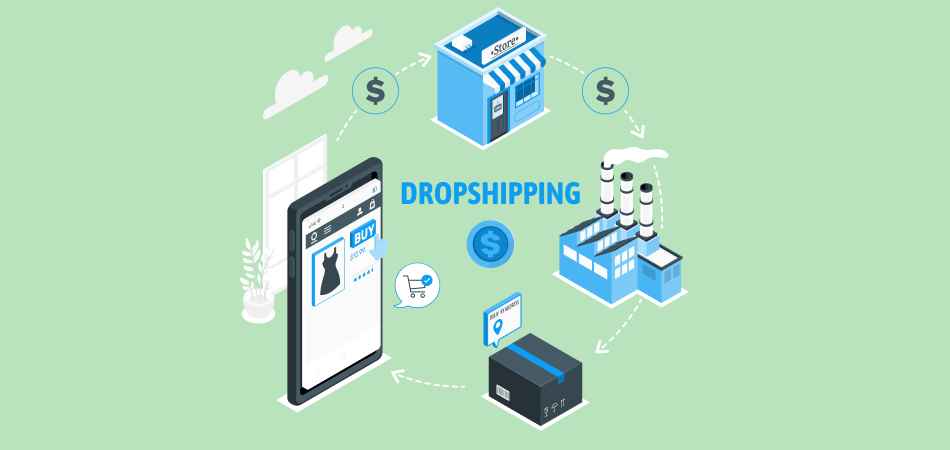Warehouse Management System: Here’s Everything You Need to Know

If you own an online store, then you might already know how tough it can be to handle various logistics. To make it easier for you to oversight these processes, you can simply take the assistance of a Warehouse Management System (WMS).
In this guide, I will make you familiar with the importance of a WMS and why you should implement it. I will also get to know about things to consider while getting a WMS and other vital details. Let’s begin!
What Warehouse Management System Is
In simple terms, warehouse management consists of various steps related to the oversighting of the overall operations in a warehouse. For instance, this will include the tracking of orders, inventory storage, shipping management, workload handling, and so on.
Thus, any software or tool that can help you automate and manage these processes is a warehouse management system. A good WMS will help you control these processes in one place and optimize the overall performance of your operations.

Depending on the kind of store and its functionality, the type of WMS you are using might vary. Though, most of them will help you excel in the following ways:
Logistic Optimization
With an advanced system, you can get a holistic view of your warehouse. This will help you optimize the available resources and improve the performance of your system with faster delivery of products.
Time-saving
Needless to say, as most of the operational tasks are automated, it will save your time and resources. Apart from eliminating errors, you can manage your time in a better way.
Space Optimization
Without an automatic system, your goods can take a lot of space. A dedicated system will have access to all SKUs and help you store them in a better way.
Types of Warehouse Management Systems
As I have mentioned, the type of WMS that you want to add would largely depend on your requirements. Therefore, you must be familiar with the different types of warehouse management systems so that you can go with a preferred option.
Standalone System
This is the simplest type of warehouse system that is mostly installed on the premise by integrating with the company’s network. If you are using a third-party tool, then it must link your ERP system. A standalone system is not linked with too many entities and is best for small and medium-scaled firms.
Supply Chain System
This type of WMS can optimize the performance of an overall supply chain system. Ideally, the system can help you automate the processes of a supply chain cycle related to material acquisition or inventory management. It is ideal for medium-scaled businesses that work on different supply chains.
Read more: Why is there a Supply Chain Issue and How to Avoid Supply Chain Shortages as Dropshippers
Cloud-based System
This is a centralized web-based WMS that provides added accessibility. Mostly, it won’t require synchronization with the network and will let you follow a more flexible approach. It is often used by modern businesses for its cheaper and faster approach.
ERP System
An Enterprise Resource Planning system can help you track your company’s overall resources in one place. Not only human resources, but you can also manage other verticals like sales, marketing, finance, and so on. This type of WMS is mostly implemented by businesses.

5 Vital Warehouse Management Processes
A good warehouse management system can help you manage and automate several processes related to your online store. Though, these are some of the most important aspects and processes in which a WMS can assist you.
Inventory Tracking
This is the most important task of any WMS as it helps us track the overall status of our store’s inventory at a glance. You can simply enter any SKU and discover its exact location and even track it remotely.
Another important thing is that it will help you update the number of available products on your website. In this way, your customers would know in advance when a product will be out of stock and the status of its remaining items. Once you start growing and expanding into more warehouses, you need to make sure that the inventory management of the system should be its strongest factor.
Packaging & Dispatching
Once your customer has placed an order through an online order system, the next steps you need to follow are related to the packaging and dispatching of the product. At first, the WMS should generate an automatic packaging slip with all the vital details (like location and contact). The slip can directly be inserted on the top of your package to track it.
Afterward, the dispatching of the product is initiated, which can be completed via native or third-party solution. A list of pickup orders can be maintained by the system to initiate batch picking as it can be a more affordable option.
Stowing & Location Management
Even though stowing is one of the overlooked operations in a WMS, it should be a primary factor in selecting it. Ideally, the system should help you manage all the incoming inventory from your suppliers. There should be a streamlined process to scan the products, check their quality, and place them at their designated spots.
You can come up with all kinds of short and long-term storage plans using your WMS. There should be clear instructions on storage, picking, and retrieval of packages as well.
Shipping & Tracking
Needless to say, your WMS should also assist you with the entire shipping process. Mostly, this can be done by closely integrating with APIs that are provided by your shipping partner like FedX, DHL, UPS, and so on.
After the order is picked from the warehouse, an API can help you track it. You can simply use it to inform your customers about the current location of the order. There can be numerous exceptions in the WMS to handle any unforeseen delay in shipment too.
Reporting & Logistic Insights
Lastly, to make data-driven decisions, you need to take the assistance of valuable insights. For this, the WMS must provide detailed inventory reports regarding order fulfillment, shipping time, etc. to calculate the overall efficiency of the process.
If you think something is not working out, then you can simply examine it via detailed reports. In this way, you can improve different processes and improve the working of your store’s backend.

Things to Consider While Selecting a Warehouse Management System
A warehouse management system can perform various tasks and comes in different configurations. Though, before you finalize any WMS for your company, make sure you consider the following things:
Efficiency
This is probably the most important thing you need to look for in a WMS. Ideally, a reliable WMS should help you improve the overall efficiency of your team. It should let you streamline all the important tasks and processes to get better results.
User-friendliness
If a WMS is hard to implement, then it can consume a lot of time and effort. Therefore, it should be easier for you to integrate the warehouse management system with your existing technologies. At the same time, its usage should be effortless so that you can easily manage your workflows.
Flexibility
Apart from being compatible with your existing technologies, the WMS should be flexible in nature. You should be able to expand it with your requirements and integrate it with numerous other technologies on the go.
Verifiable
To drive better results, you need to verify all sorts of data obtained via different processes. For example, by tracking your orders and other deliverables, you can easily verify your data. This will help you make smarter and data-driven decisions related to the overall management of your store.
Transaction Management
Most important, your WMS should handle all sorts of transactions supported by your business. From handling its logistics to shipping, the WMS should help you manage numerous transactions by providing a holistic view of the system.
Explore Dropshipping with DSers: Say Goodbye to Unwanted Logistics
As you can see that managing a warehouse can be a tedious experience. To overcome this, you can simply take the assistance of DSers, which is the official AliExpress dropshipping tool.
| Get Started Now to Grow Your Online Business with the Best AliExpress Dropshipping Tool - DSers! |
- You can explore tons of products from thousands of different suppliers on DSers and pick any product of your choice.
- With its unique supplier optimizer feature, you can instantly pick the best-rated supplier for any product.
- DSers will help you save your time with options like automatic syncing of tracking numbers or the tracking of order statuses.
- You can instantly integrate DSers with leading eCommerce platforms like Shopify, WooCommerce, and Wix.
- A few other options available on DSers are bundle products, bulk purchasing, variant mapping, stock management, and more.

Over to You!
As you can see, managing your store’s warehouse can be a complicated process. That’s why experts recommend using a dedicated warehouse management system that can make your job a whole lot easier.
To make things easier for you, I have even included various things that you can look for while buying a WMS. Besides that, you can also come up with an online dropshipping store using DSers. It is the official AliExpress dropshipping solution that offers tons of features and is super-easy to use.













 Company
Company
 Why Choose DSers
Why Choose DSers
 Blog
Blog
 Help Center
Help Center



